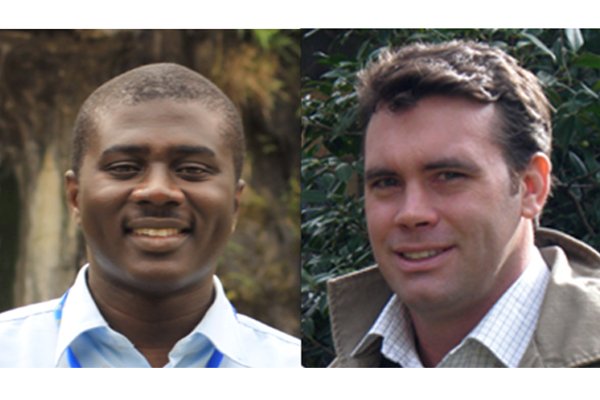
Dr Michael Danquah (left) and Dr Gareth Forde of Bio Engineering Laboratory who developed the BEL monolith technology
Can DNA vaccines be the answer to diseases such as malaria and influenza? Though DNA-based vaccines have emerged as appealing alternatives to conventional ones, there are still gaps to be filled for them to become commercial successes.
DNA-based vaccines, which are stable at ambient temperatures and easy-to-formulate, have great potential of handling such diseases. However, the world still lacks a rapid and commercially viable process of manufacturing DNA vaccines that include optimized purification technique, stationary adsorbent to allow high-vaccine recovery, low-processing time, and, high-productivity.
A technology developed by two researchers, Dr Gareth Forde and Dr Michael Danquah, at Bio Engineering Laboratory (BEL) within the Department of Chemical Engineering at Monash University, addresses this need. The BEL monolith technology is a response to the need for improved efficiencies in bioprocessing methodologies and purification of plasmid DNA for use in emerging DNA vaccine technologies.
The monolith, developed by the two researchers, is an innovative chromatographic adsorbent used to separate biomolecules ranging from 10 to 2000 nm in diameter. The monolith technology can be operated like any other conventional columns with axial flow, but at higher flow rates and low column back pressure. The monolith's pore size can be tailored for purification of any biomolecule. The targeted approach and unique monodispersity of the monolith binding pores enables higher binding capacities and streamlined processing when compared with existing adsorbents that have been traditionally designed for protein purification.
According to the team, this technology holds promises for both the industry and the research communities for its efficiencies and streamlined bioprocessing that enable improved quality of purified biomolecules at less cost and time.
The research team filed the first patent application for the invention in 2006 and, realizing the commercialization potential in the technology, Professor Nick Birrell, associated with Australian company Kintan, took the intellectual property for commercialization. Representing a novel approach for commercialization of an early-stage biotechnology, there is a wide team dispersed across the geography for popularizing the technology.
"The monolith offers several superior yields of biomolecule (for example DNA, protein, antibodies, virus) when compared to other commercially available adsorbents that cannot be tailored. The BEL Monolith Purification Adsorbent has been proven to significantly improve the purification yields of plasmid DNA at a fraction of the market cost. The technology also offers performance advantages when applied to proteins and has the capability to target other biomolecules, such as viruses and endotoxins," says Mr Clarence M Ongkudon, a research scientist.
The initial development of the technology was funded by Australian research grants. Following the technology transfer to Kintan, the patent filing and commercialization costs were financed by Kintan. To enhance the technology further, the research team is conducting trials on other biomolecules, including protein purification, for broader commercial implication of the technology.




